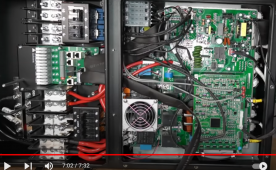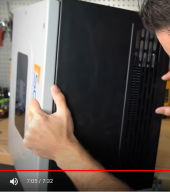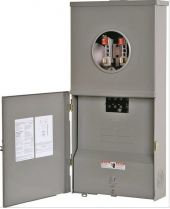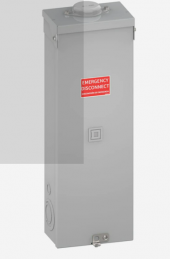I don't see the need/benefit of moving neutral/ground bond from breaker panel to disconnect.
Maybe code requires it, maybe not, but I don't know why it should.
I could have an isolated inverter/generator feeding a breaker panel that contains neutral-ground bond.
Or, inverter/generator could provide the bond, and breaker panel keeps them isolated?
Seems to me, grid, service entrance, disconnect switch is no difference.
Only L1 and L2 are being disconnected. Neutral feeds through the switch. Ground feeds through the switch. Works the same wherever bonding occurs.
The meter itself is a disconnect switch; utility can unplug it. Does that mean neutral/ground bond is required to occur inside or prior to meter socket?
Hedges My understanding is it is a code requirement that the bonded ground is in the first grid connect box, whatever that happens to be. There are several other sources that appear to confirm this as code. Since I have an inspector who will check my install I don't feel like I have any choice in the matter. He also insisted that my 20 year old home needs a second ground rod 6 feet from the one installed outside . New code I guess?
So... I think folks who install the new 15K and like the idea of eliminating the need for a "critical needs panel" should learn (as I have ) that there is no free lunch, and adding something that appears simple like a fused cut off switch between grid and your main panel is a bigger, more expensive job that involves installing new bus bars in the main panel, removing and relocating every bare copper ground away from the shared ground neutral bus bar in the main panel.
In addition (in my case) you cannot assume that once the 4/0 main feed wires in your main panel are disconnected, you can then have them exit that panel, or be spliced to the longer wire required to connect to the new fused cut off switch. Code doesn't allow that either.
So in addition to the ground bonding change, and moving all the bare grounds inside the main panel, you also need to move the main panel (my feed is encased in 20 feet of pvc buried in the garage floor.) to the left to allow unfettered access to the grid power feed through hole and wires, then install a wireway, or box to make the splices needed to connect the new fused cut off switch.
And yes.. I am waiting on a reply from Solark about the "cartoon" schematic they include (#3 with xfer switch in my case) and expect that they will admit that the bonded ground location staying in the main panel is just plain wrong.
Hope this helps others who are going down this path.
Thanks for the replies confirming what I have learned.
Now back to running 4/0 AL wire through conduit and raceways.
Anyone available to come over and help me lift the 140LB Solark onto the cleat on the wall. My go to neighbor help is on vacation.


CPU








